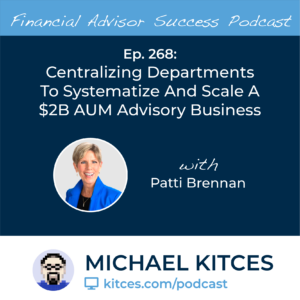First introduced in the 1970s, index funds have grown in popularity over time thanks to their ability to provide broad-based diversification at (typically) very low costs, making their benefits available to investors of any level of wealth. And while mutual funds and Exchange-Traded Funds (ETFs) have been the dominant way for investors to get index exposure, thanks to improved technological capabilities and reduced trading costs, direct indexing – buying the individual component stocks within an index – has emerged as an alternative tool with a range of potential use cases.
Historically, direct indexing was developed as a means to unlock the tax losses of individual stocks in an index – even if the index itself was up – and was primarily used only by the most affluent investors (who had the highest tax rates and benefitted the most from the available loss harvesting). However, direct indexing can be used not only to harvest tax losses but also to harvest capital gains (particularly for those taxpayers in the 10% and 12% tax brackets). In addition, direct indexing can provide tax benefits to investors who are charitably inclined by allowing them to donate the underlying shares within an index that have the largest gains, thereby helping them to maximize their tax savings.
For those whose primary goal is to benefit from a more personalized indexing strategy that still gains broad market exposure while specifically adjusting for personal preferences, using a personalized index can ensure the investor’s capital will support the exact industries or companies they wish to support (while also saving on the management fees otherwise charged by more packaged ESG/SRI mutual funds and ETFs).
The direct indexing framework also is relevant for advisors whose default strategy is to own “the market” (i.e., broad-based index funds), but who also want to overlay various rules that subsequently modify or tilt the allocations based on their own (or their clients’) investment preferences or outlook, such as over- (or under-)weighting certain sectors, factors, or segments of the market.
Finally, direct indexing can be used to help a client with a large, highly appreciated or concentrated investment position, or one whose human capital is tied up in one company or industry. For these clients, an advisor can build around the holdings committed to an existing company or industry by diversifying the remaining assets into an index, better positioning the client away from exposure to a potential downturn in their company’s (or its industry’s) performance.
The distinctions between the four types of direct indexing are important, as the various uses of direct indexing necessitate very different capabilities from the platforms themselves. Which in turn means that more than multiple different indexing providers can each have the potential for breakout success, by building the best-in-class solution for a particular direct indexing approach… while recognizing that what it takes to be most successful in one direct indexing category may be very different from what it takes in others.
Ultimately, the key point is that the value of direct indexing is no longer limited to tax benefits for high-net-worth clients. The developing uses for direct indexing – personalized indexes, rules-based advisor investment strategies, and customized completion portfolios – can benefit a wider range of clients. And while it remains to be seen whether direct indexing will start to displace mutual funds and ETFs in advisor-managed portfolios, its expanded uses, increased outside funding into direct indexing providers, and growing platform capabilities, suggest that direct indexing’s value to advisors is likely to expand in the future!

 Welcome back to the 268th episode of the Financial Advisor Success Podcast!
Welcome back to the 268th episode of the Financial Advisor Success Podcast! Welcome back to the 267th episode of the Financial Advisor Success Podcast!
Welcome back to the 267th episode of the Financial Advisor Success Podcast!
